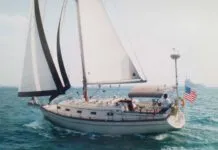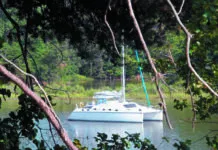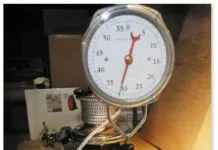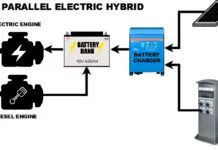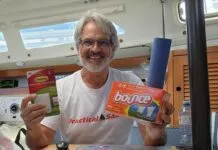
Kevin Escoffier’s IMOCA 60 PRB was a proven performer, designed by Verdier-VPLP, built by CDK Technologies and launched in 2010 for her original owner, Vincent Riou. In 2013 and 2015 he won the Transat Jacques Vabre, plus finished fourth in the Route de Rhum. Foils were added during a 2017 refit, and the makeover produced what seemed to be a solid, very competitive boat for the Vendée Globe 2020.
The great conundrum faced by sailboat designers is that many, if not most, ocean races are won or lost during the light air episodes. Consequently, light displacement and large sail area are favored design features. But as many old salts have muttered, “you can’t win if you don’t finish.” The net result of these conflicting goals is a need to engineer an appropriate structural safety factor into the key elements of an ocean racer.
Naval architects have lots of trial and error knowledge about keel to hull attachment and how much dynamic loading takes place in a sea way. It’s at high-stress areas on a sailboat where the argument for extra reinforcement rings clear. So it stands to reason that adding wing-like lifting foils to a sailboat should be treated accordingly. The trouble is, sailboats haven’t been flying over storm tossed seas while riding on lateral appendages for very long. And these performance-boosting lifting surfaces also act like crowbars attempting to split the hull wide open. The data going into finite element analysis (FEA) computer programs is incomplete and may not hold the full picture of what goes on when a 60-footer nose dives into a steep trough, churned up by a storm tossed sea.
Structural fatigue is another concerning nautical question mark. And in this case, PRB was a ten-year old IMOCA racer that had competed in 26 major ocean races—many of which were Transatlantics. Two prior Vendée Globe attempts faltered due to hull damage that led to withdrawals from the race. The sum total of sea miles and how hard the vessel was pushed is hard to enumerate, but naval architects and structural engineers agree that structural fatigue and age have a negative impact on composite structures.
In 2017 PRB went through a refit that included installing a set of wing like foils that added a significant performance uptick. The beneficial result included an increase in sustained speed, velocities never imagined during her original design. Such major modifications posed a significant engineering challenge. It should include a reassessment of primary, secondary and tertiary hull bending moments, along with an analysis of where new loads would be focused and the stress risers they would create. It’s relatively easy to determine static tension, compression and shear loads, but it takes more than computer modeling to pin down the dynamic effect linked to prolonged, high speed sailing in an angry ocean.
The ISAF technical committee has recently been reviewing keel attachment problems and some of their preliminary findings are cause for concern. One of their observations is that offshore race boats have a functional life span of ten years. Thus, adding foils to an older, heavily campaigned sailboat carries multiple engineering challenges. Firstly, the point loads linked to mounting the foils, another high aspect ratio hull appendage, needs to be addressed. Secondly, the effect of cycle loading and structural fatigue in older, heavily sailed boats should be considered. Determining just how deteriorated and older FRP hull/deck structure has become is currently more subjective than objective. Add to this, the new challenges imposed by repeated “crash landings” and higher velocity wave impacts and it becomes clear that the foiling Vendée Globe solo sailor is both an extreme sport sailor and a nautical test pilot.



